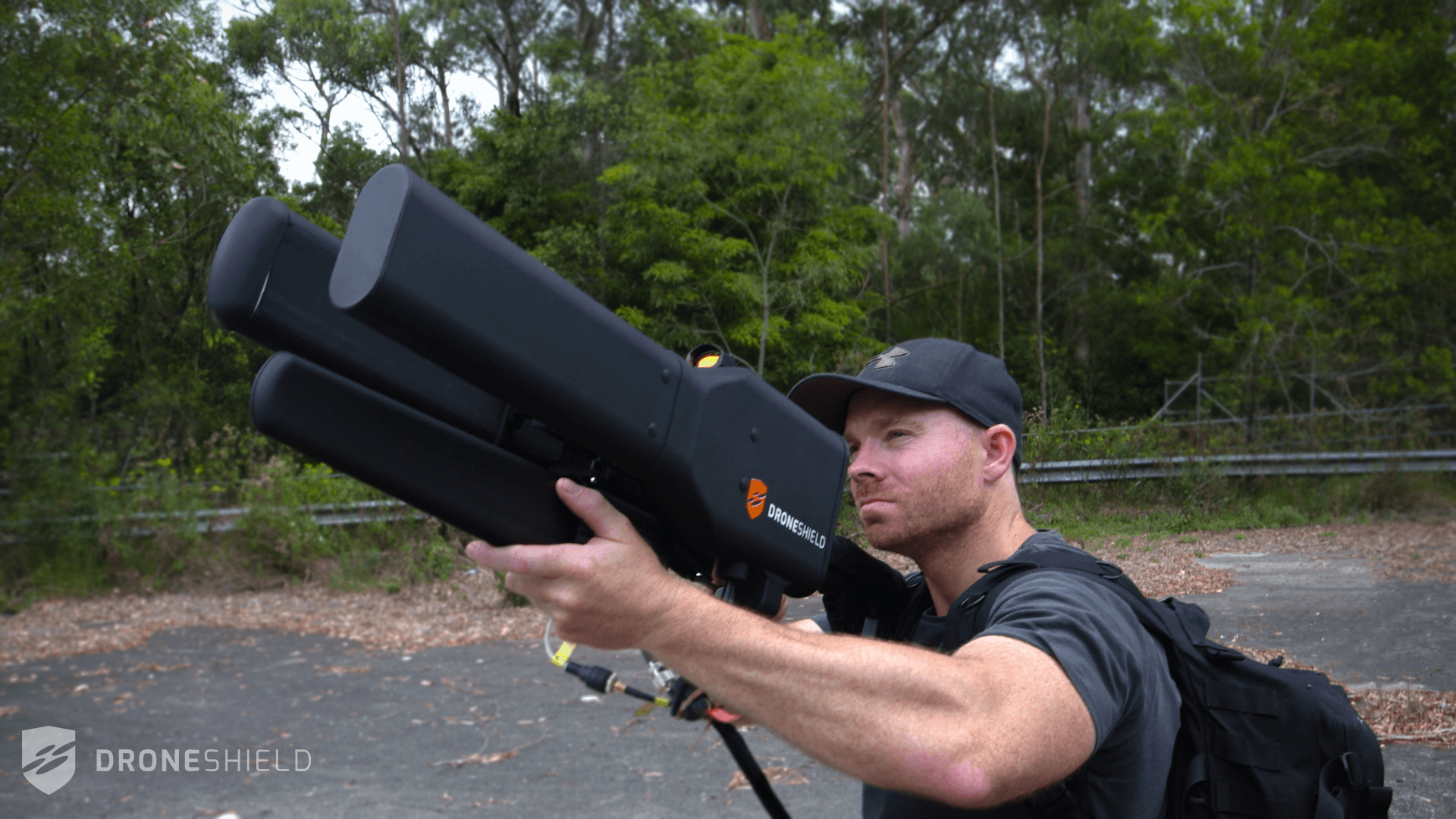ASX-listed DroneShield launches signal-jamming DroneGun


Drone detection company DroneShield has unveiled its handheld rifle-style DroneGun, a device that jams communications between drones and their pilots in an effort to help fight terrorism.
The DroneGun can signal-jam a drone device up to 2km away in a range of environmental conditions, and enables a controlled landing of the drone and its payload, either dropping vertically or returning to its starting point.
The DroneGun can also track down the drone user for certain models, and offers an optional GPS-jamming capability for customers outside of the United States.
Featured
Delaware-based DroneShield said on Monday that there is a "substantial need" for the product, due to an increase in the use of drones for terrorism. The company cited reports of an Islamic State drone rigged with explosives that killed two Peshmerga fighters and wounded two French soldiers in Iraq. Another instance last month saw Kurdish forces shoot a small hobby drone in northern Iraq, a stronghold for ISIS, which then exploded upon examination.
DroneShield has sold, piloted, and trial-installed approximately 214 sensor units. The company's system detects acoustic signatures of drones, which are analysed by a signature database. This then issues an alert on an approaching drone.
The company filed its Initial Public Offering (IPO) in May, raising AU$7 million to complete its listing on the Australian Securities Exchange (ASX) the following month.
The company said at the time that it expects to use the IPO funds to further scale DroneShield's existing technology, expand into new markets, and pay any ongoing intellectual property, legal, insurance, and administration costs.
DroneShield LLC was formed in January 2014, and in November last year, DroneShield Limited was incorporated. The company's board includes Robin Brims, former commander of the British Field Army; Dr Samantha Ravich, former deputy national security advisor for US Vice-President Dick Cheney; and former Australian Minister for Defence Robert Hill.
The company estimates that 12 million drones will be in use by 2020.
With the proliferation of cheap drones has come a rising misue, and governments and agencies have been pushing counter-drone technology as a result. The US military's Black Dart exercise series tests various commercial and military solutions, while the Federal Aviation Administration (FAA) trialled its Anti-UAV Defense System (AUDS) to detect and identify potentially dangerous or hostile drones close to airports.
The anti-drone ray, which uses thermal imaging for drone detection, was developed in response to the concurrent issue of people flying private drones far too close to airports, reports of which total around 100 per month, the FAA said.
Fellow ASX-listed American company Department 13 this month unveiled its counter-drone device Mesmer, which "mesmerises" intrusive drones by manipulating their radio transmission protocols.
With Mesmer, Department 13 can manipulate radio transmission protocols that are used to control drones. This is made possible because most commercial drone radio controls operate in established frequency bands and use standard command protocols. The company wanted a counter-drone method that reduced the risk of any potential danger to nearby personnel or infrastructure.
"We believe that making drones fall from the sky is a bad thing," chief executive Jonathan Hunter said, who pointed to an incident last year when a drone carrying radioactive material was found on the roof of the Japanese prime minister's office.
"If they had shot that out of the sky, they would have dispersed radiological material everywhere," Hunter said. "That would have shut down Tokyo for at least a month."
Department 13's demonstration in Queensland was hosted at the Metricon Stadium, the primary venue for the 2018 Commonwealth Games, which the company said "represents the sort of use case scenario which could be rolled out by Department 13 globally".
Aside from drone defence, the company has 13 patents and 22 patent applications in areas such as cellular communications and networking, data bandwidth, and cybersecurity for mobile devices.
With AAP